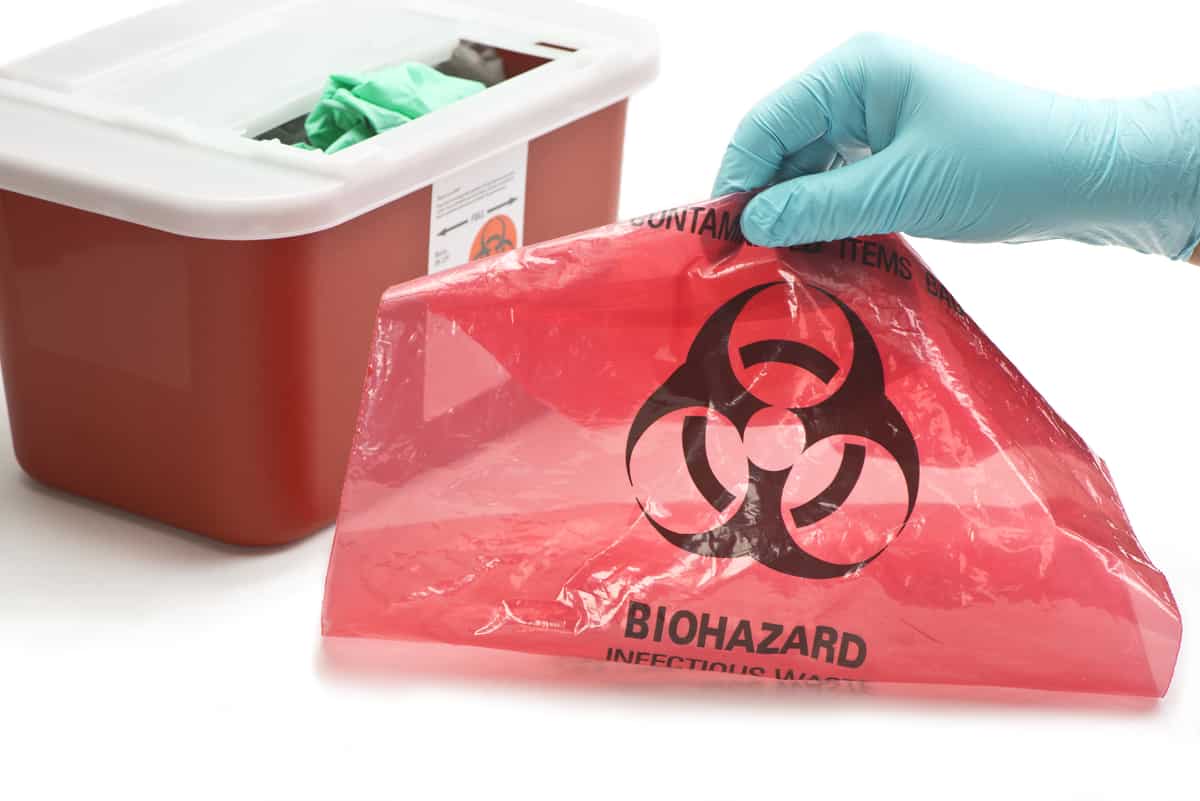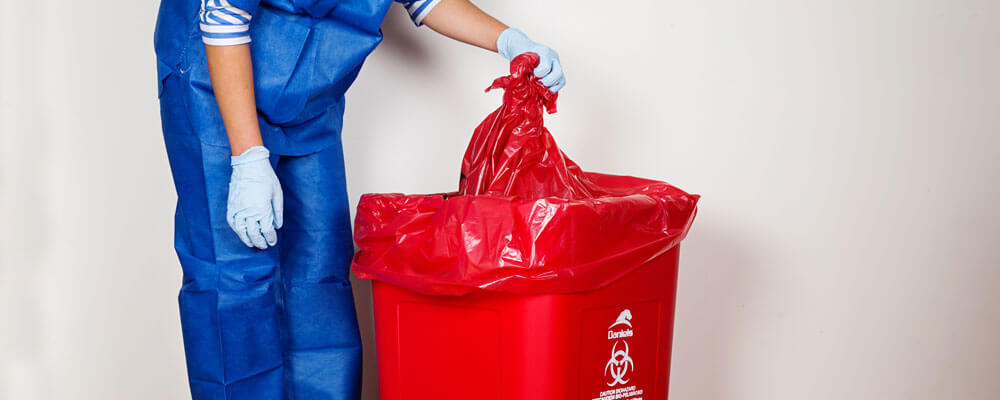The Significance of Proper Medical Garbage Disposal: An Overview for Medical Care Facilities
Appropriate medical garbage disposal is a crucial aspect of healthcare center management, making sure the safety and well-being of patients, staff, and the environment. From understanding the different categories of medical waste to following regulative demands, medical care centers must embrace reliable waste partition practices and choose suitable disposal methods. The importance of appropriate medical waste disposal goes beyond simple compliance; it is a responsibility that calls for recurring training and education and learning for personnel. In this overview, we will certainly check out the various aspects of clinical garbage disposal and highlight the crucial steps that healthcare facilities need to take. By executing these techniques, health care centers can minimize dangers, shield public health, and add to a cleaner, safer environment.
Recognizing Medical Waste Categories
Recognizing clinical waste classifications is crucial for proper disposal in healthcare centers. Clinical waste is a wide term that includes various types of waste generated in healthcare setups, such as research laboratories, facilities, and hospitals. Categorizing medical waste helps make sure that it is handled, stored, and disposed of securely and according to suitable laws.
There are a number of categories of clinical waste that medical care facilities require to be knowledgeable about. These categories consist of contagious waste, sharps waste, pharmaceutical waste, chemical waste, and radioactive waste (medical waste disposal services with WasteX). Each group has certain features and calls for different disposal techniques to decrease the danger of injury to medical care employees, clients, and the setting
Infectious waste, for instance, describes waste infected with possibly infectious products, such as blood, body liquids, and cells. Sharps waste includes needles, syringes, and other sharp things that can trigger injury or transfer infections. Drug waste contains run out or unused medications, while chemical waste contains harmful chemicals utilized in clinical treatments. Contaminated waste consists of materials polluted with radioactive compounds, such as nuclear medicine products.
Compliance With Regulatory Requirements
Health care facilities need to ensure conformity with governing needs for appropriate medical garbage disposal. Governing bodies, such as the Epa (EPA) and the Occupational Security and Health Management (OSHA), have actually established guidelines and policies to secure public health and wellness and the environment. These regulations detail the proper handling, storage, transportation, and disposal of clinical waste.
Compliance with governing needs is vital for healthcare facilities to stay clear of lawful fines, reputational damage, and potential injury to human health and the environment. Failure to adhere to these guidelines can cause penalties, claims, and also the suspension or retraction of operating licenses.
To guarantee compliance, healthcare centers must establish extensive waste management programs that consist of team training, appropriate waste segregation, and using appropriate containers and tags. Regular audits and inspections need to additionally be performed to determine any non-compliance issues and resolve them immediately.
It is important for health care centers to keep up to date with adjustments in policies and upgrade their waste monitoring practices as necessary. This can be achieved by actively checking updates from regulatory bodies and joining training programs and workshops.
Carrying Out Effective Waste Segregation Practices
To ensure correct clinical garbage disposal, healthcare facilities need to implement efficient waste segregation methods. Waste segregation is an essential action in the overall waste management procedure, as it assists minimize the threat of infection, avoids cross-contamination, and makes sure the secure disposal of various kinds of waste. Reliable waste partition techniques entail dividing clinical waste into various groups based on its qualities and prospective threats.
One common practice is the partition of sharps waste, such as scalpels and needles, from various other kinds of clinical waste. Sharps waste must be put in puncture-resistant containers to protect against injuries and possible infections. Additionally, harmful waste, such as chemicals and drugs, must be separated from basic clinical waste to stop ecological contamination.
Correct labeling and color-coding of waste containers are important for effective waste partition. Clear and noticeable tags ought to be put on each container to indicate the kind of waste it has and any type of special handling requirements - medical waste disposal services with WasteX. Furthermore, color-coding can be utilized to differentiate in between different waste categories, making it much easier for medical care personnel to identify and get rid of of waste correctly
Routine training and education and learning for healthcare personnel is important for the successful implementation of waste segregation techniques. Employee ought to be educated on the different waste classifications, appropriate partition techniques, and the value of adhering to waste management procedures. This will assist make certain compliance and consistency in waste segregation practices throughout the facility.
Deciding On Appropriate Disposal Approaches
Correct selection of proper disposal methods is necessary in ensuring the secure and environmentally responsible management of medical waste in healthcare facilities. Healthcare facilities generate a variety of medical waste, including sharps, transmittable waste, pharmaceutical waste, and chemical waste - medical waste removal near me. Each kind of waste calls for specific disposal approaches to reduce the danger of contamination, injury, and environmental harm
One typical disposal method for medical waste is incineration. Incineration involves the regulated burning of waste at high temperatures.

Chemical sanitation is another approach used for sure sorts of medical waste, such as pharmaceutical waste. This technique makes use of chemicals to neutralize or destroy contaminants. It is important to choose chemicals that are environmentally pleasant and secure.
Sometimes, landfill disposal might appropriate find for non-hazardous clinical waste (medical waste disposal services with WasteX). Proper partition and product packaging are critical to prevent leak or contamination.
Ultimately, health care centers should very carefully examine the attributes of their medical waste and pick ideal disposal approaches that focus on safety, environmental management, and regulatory conformity. Routine training and surveillance are necessary to ensure that medical care personnel adheres to proper disposal protocols.

Training and Educating Team on Appropriate Disposal Procedures
Staff education and training play a crucial duty in guaranteeing the proper disposal of medical waste in health care facilities. It is crucial that all personnel participants, including physicians, registered nurses, professionals, and assistance personnel, receive comprehensive training on proper medical waste disposal services with WasteX disposal procedures. This training ought to cover the different sorts of clinical waste, their possible hazards, and the ideal methods for managing, segregating, and disposing of them.
Among the key goals of staff education and learning and training is to ensure that all health care specialists recognize the importance of proper disposal procedures and the possible consequences More Info of incorrect waste management. They need to be familiar with the risks connected with clinical waste, such as the transmission of infections and the contamination of the setting. medical waste removal services. By recognizing these dangers, team member will be more motivated to comply with proper disposal procedures and take the necessary safety measures to shield themselves, their colleagues, and the neighborhood
Educating should also cover the usage of individual protective equipment (PPE) and the appropriate methods for dealing with medical waste. Personnel need to be educated on just how to identify and set apart various sorts of waste, such as sharps, transmittable waste, and unsafe chemicals. They must also be educated on the correct use of waste containers, such as sharps containers and biohazard bags, as well as the importance of labeling and securing these containers properly.
Moreover, personnel education and training need to consist of regular updates and refresher course programs to ensure that healthcare experts remain informed about the most recent guidelines and ideal methods in clinical garbage disposal. This continuous education is vital to preserve a high degree of awareness and conformity among personnel.
Final Thought
To conclude, proper medical waste disposal is of utmost relevance for health care centers. Understanding the various classifications of clinical waste and following governing needs guarantees the safety and health of both healthcare workers and the basic public. Carrying out efficient waste segregation methods and selecting proper disposal approaches are critical in protecting against the spread of transmittable conditions and shielding the setting. Training and informing personnel on correct disposal treatments is crucial for maintaining a risk-free and clean health care center.
From comprehending the various categories of medical waste to complying with regulative demands, health care centers have to take on reliable waste segregation techniques and pick suitable disposal techniques. These categories include infectious waste, sharps waste, pharmaceutical waste, chemical waste, and contaminated waste.To make certain correct medical waste disposal, health care facilities must execute reliable waste partition techniques. Waste partition is an essential action in the general waste monitoring process, as it aids reduce the risk of infection, prevents cross-contamination, and makes sure the secure disposal of different kinds of waste. Healthcare centers generate a variety of clinical waste, consisting of sharps, infectious waste, pharmaceutical waste, and chemical waste.